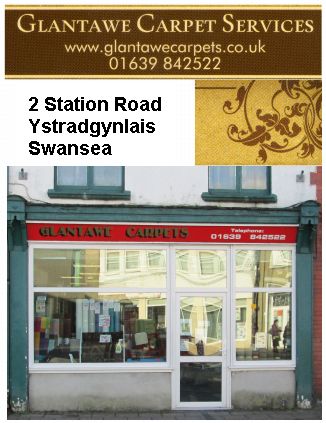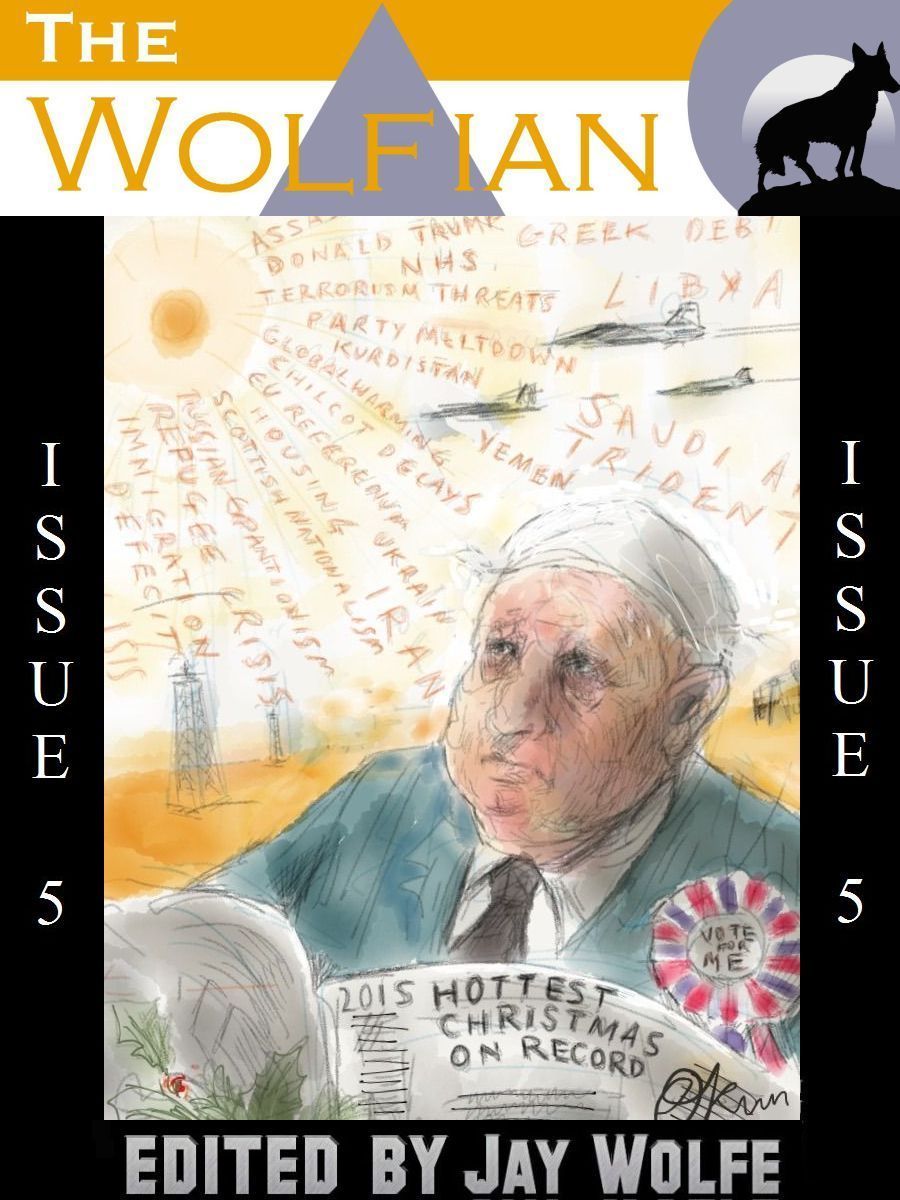Ystalyfera
History and Heritage
Dangerous Bridges
This article of Dangerous Bridges came about after Noel Watkins (a late researcher and historian and sadly missed member of Yeargroup) related a story to me of when he had taken several people a walk over to Seven Sisters. He had, prior to the stroll given them instructions for the route although had not left when they departed but said he would nevertheless soon catch them up. In fact he was sitting on the grassy bank waiting for them. Apparently they all had to cross the River Tawe and the party had set off towards the nearest bridge which was unfortunately a way back from their intended route. Noel on the other hand had simple taken off his socks and shoes and waded across at a suitable spot. When I enquired about the depth and flow of the Tawe he replied I would rather take my chances in the water than cross any of those structures man calls bridges.
After looking at the history of just a few of our older bridges perhaps I could see why he preferred a deliberate soaking.
THE WORST BRIDGE IN WALES
An open letter was sent to Messrs. W. H. Cooke and Arkwright, Agents for the Yniscedwyn Estate; Mr. D Glyn Meredith Clerk to The Rural District Council Officers Pontardawe and Mr. K W C Grand General Manager, Bristol Railways (Western Region) Paddington Station London W2.
"Gentlemen,
I want to get to the bottom of a local scandal and want your help to do so... I believe to be the worst bridge in Wales still to be used by pedestrians. I address this open letter to you because I believe that you (either separately or together) hold the key to a situation which is causing great concern.
This treacherous Ynysgeinon Bridge is still being used daily by people who have to cross the Tawe River in the upper reaches of the Swansea Valley. I wish you could have come with me yesterday when I walked over it. On the Godre'rgraig side of the bridge lay a load of coal - obviously intended for residents on the other side of the river and dumped there by a coalman.
Who could be expected to carry anything across such a structure? I tried myself to carry a heavy stone a few feet across and nearly stumbled into the icy Tawe. After the first few steps, walking up a grassy, crumbling bank of loose stones, I walked nervously over a narrow piece of stonework only two feet wide.
It was difficult to keep a footing. When I tried to mount the next hump of the bridge it was comparable to walking on a bed of Indian fakir's knives. The sharp edges of the stone are turned upwards to your feet. You can not safely keep a footing. There are no hand rails and no protection. A single slip and you are in the water...
At any moment parts of this bridge are liable to crumble. Two arches on the far side are held together by bands of iron around the stone bases. For years the dangers of this bridge have been discussed in Swansea Valley and then 12 months ago, the Pontardawe Council wisely got together with the Glamorgan County Council to end the scandal.
A new bridge has been built and has now been lying for four months at the Glamorgan County Council Depot at Bridgend - waiting (I have been told) for agreements to be signed between British Railways and the Yniscedwyn Estate, who have an interest in the land..."
Yours respectfully,
On behalf of the Public
The Editor of the SOUTH WALES VOICE
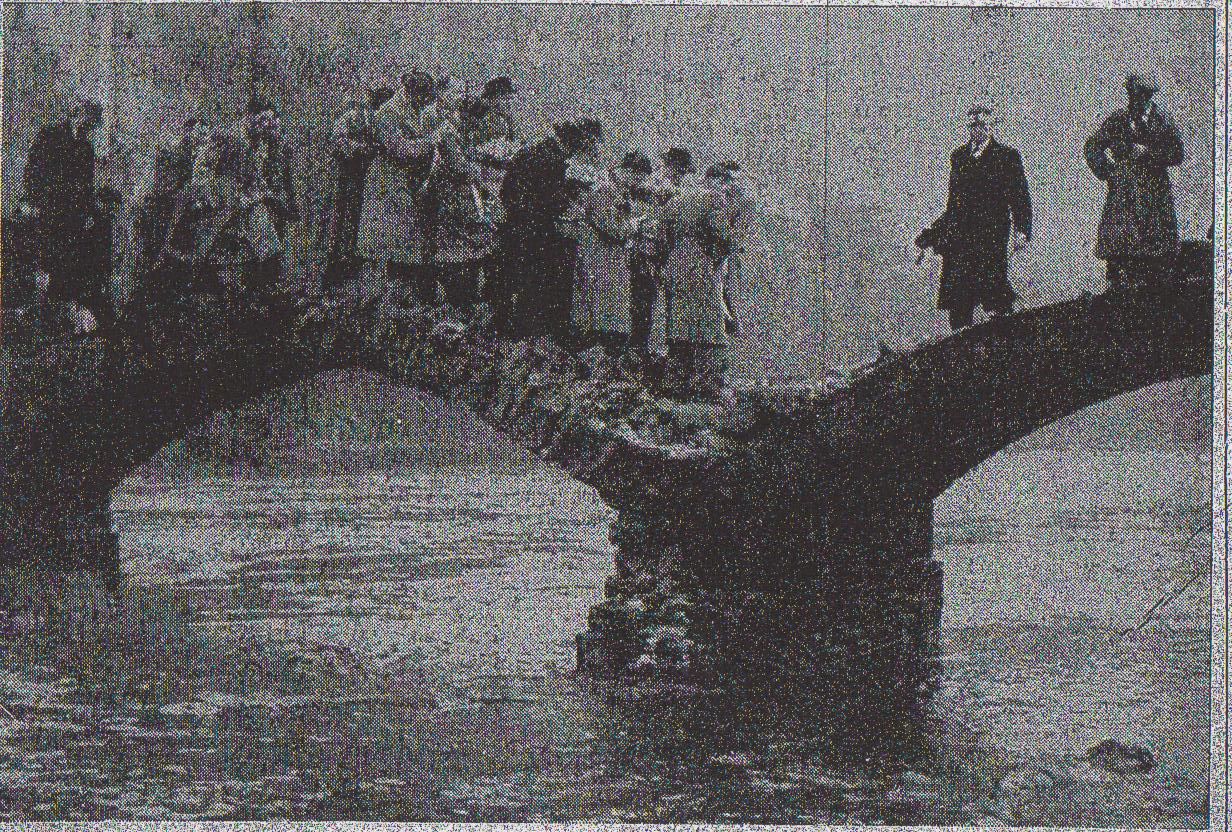
On 6th February 1954, John Henry Day died and was buried in Plot A182 in Godre'rgraig Cemetery. Interestingly, someone with a camera had captured the moment when, in order to arrive at the cemetery, the coffin first had to be carried over the River Tawe.
Click on the photograph to see full-sized.
"Precisely at 3 o'clock on Tuesday afternoon the group of men assembled out side the white cottage home at Graig y Fforest Godre'rgraig, of Mr. John Day, slowly moved down the mist shrouded mountain side towards the river.
In their midst, in a carved, unpolished silver handled coffin they carried the body of John Day - one time miner, butcher, sheep farmer and sportsman - to his last resting place. Down the path to the river the white-looking coffin was shouldered by groups of six men who were relieved of their burden at intervals until at last they reached the river bank. And then - the absolute necessity for having so many men - there were 52 of them - at the funeral became clear.
They had to carry the coffin over the notoriously dangerous Ynisgeinon Bridge. White tapes were slipped underneath the coffin and through handles and while most of the men spread themselves over the length of the bridge, eight took the coffin and began crossing.
There was no room to spare: the bearer's shoes were almost always on the very edge of the bridge, and slowly, slipping, sliding, stumbling they mounted the first arch and handed the coffin over to others waiting with outstretched hands in the depression between the next arch.
And so it went on, never for a moment free from the danger that bearers and coffin would tumble into the swollen angry Tawe rushing below them.
One moment the coffin, with its bright wreaths on top, would be pointing half way to the grey sky, then it would be level, then pointing downwards and so on until the bearers, red faced and perspiring at last reached the waiting hears.
The proceedings were quiet, solemn, respectful and, even in these circumstances, dignified.
But it was, nevertheless, a shocking commentary on present day civilization that a body could not be taken simply and smoothly to its last resting place and that men should have to risk a soaking - if not drowning - to bury a friend because a bridge, which has been lying idle about twenty miles away, has not been put into the position where it is so desperately needed."
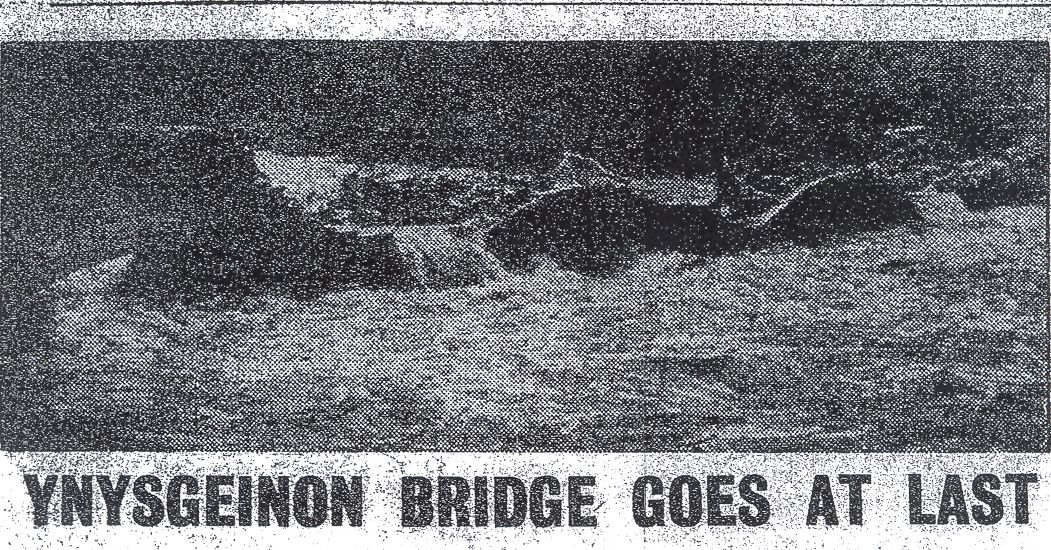
|
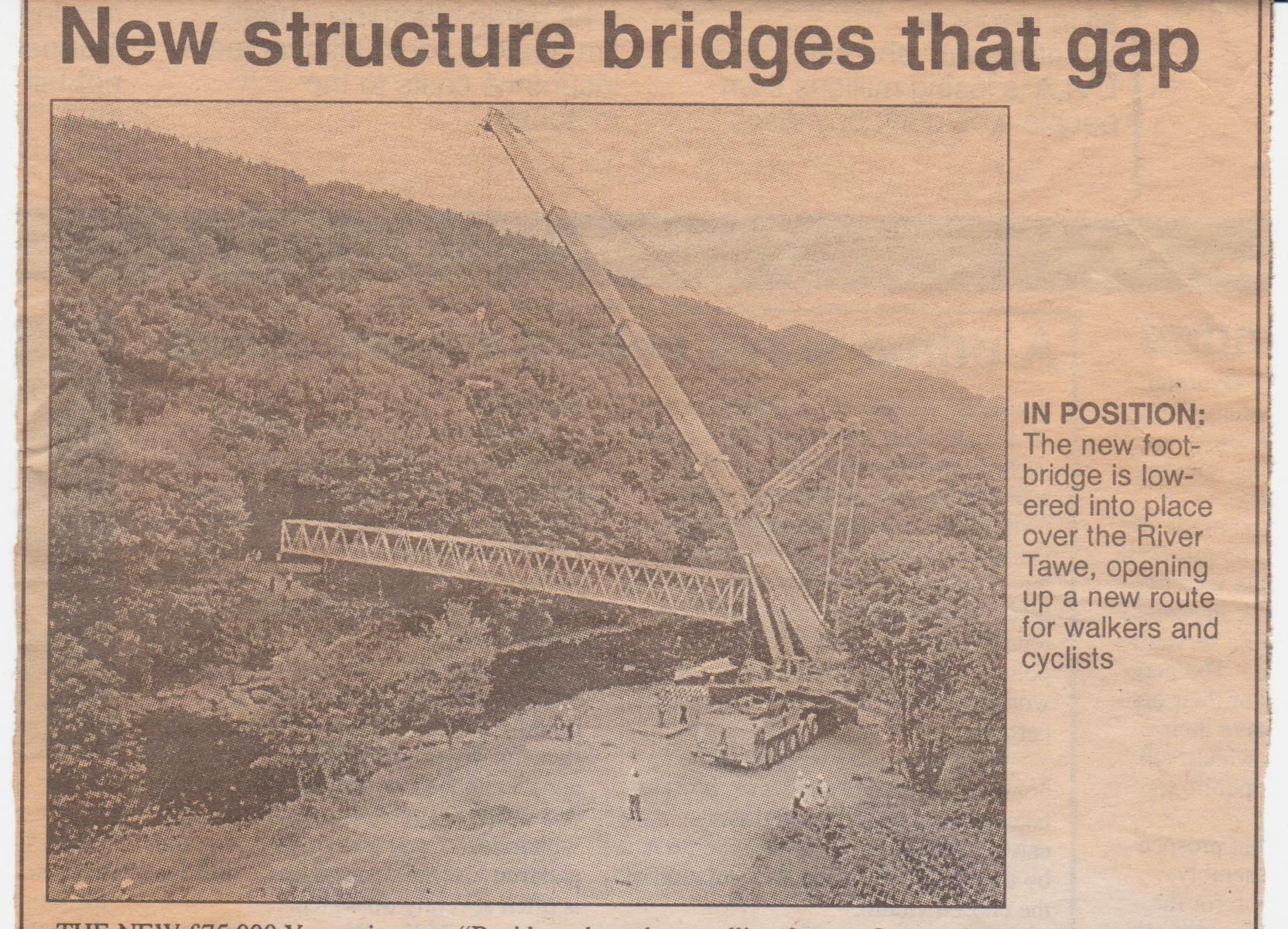
|
The severe storms during September 1958 swept away the remaining structure of the Ynysgeinion, at last requiring its eventual replacement.
I was given a picture of a new bridge but no date accompanied the article which I suppose is every researcher's nightmare so if any one can provide a date when this bridge was put into place I would be most grateful. Val Trevallion
The above came after the long-standing saga of the bridge that was ordered, but never arrived.
THAT NEVER NEVER BRIDGE
A strange title for a bridge until I read the article below and realised I had a further story about the Ynisgeinon Bridge. I knew this old bridge across the Tawe was beyond saving: in fact the few photographs I had uncovered showed that it had already been reduced to a crumbling mass of stone - a sorry state even, when in 1954, the bridge had to be used to enable the coffin of John Henry Day to cross the Tawe to be buried in the cemetery at Godre'rgraig.
As previously reported, referring to the open letter published by the Editor of the South Wales Voice, we are informed that "a new bridge had been built and has now been lying for 4 months at the Glamorgan County Council Depot at Bridgend".
This latest article, dated 1957, shows a photograph of the old arches and states that it has taken £4,500 to replace.
SOUTH WALES VOICE 1st MARCH 1957
"Ynysgeinon Bridge, at Godre'rgraig, has been more often discussed than any other matter by Pontardawe Rural Council in the past 20 years. That was what Councillor Tom Edwards said at a meeting of the council last Thursday when following his suggestion the council decided to call a conference with Glamorgan County Council, Llanguick Parish Council and Cilybebyll Parish Council to discuss the matter.
It was stated that a new bridge for Ynysgeinon - said to have been bought by the County Council FIVE YEARS AGO and which was "probably rusting in some yard in Bridgend" - would cost ratepayers about £4,500.
It was also stated that ten out of eleven cottages on the other side of the River Tawe at Ynysgeinon were unoccupied. And one councillor, Mr John Davies, said that he understood that the one house occupied - a condemned one - was occupied by a squatter."
The NEVER-NEVER BRIDGE had run into a problem. The Council apparently could not find the owner of the old bridge.
A second article dated 28th JUNE 1957 continued "Godre'rgraig councillor Mr John T Williams, said this week that there were so many obstacles being encountered in the case of Ynysgeinon Bridge, that it appeared the new bridge would never be erected.
Speaking at a meeting of Llanguick Parish Council on Monday, Mr Williams told members: "It has become the bridge of hopes, ifs and buts. It appears it is not to be, and it is only right that the people of Godre'rgraig should know.
I can't see it happening, but should the bridge ever arrive in Godre'rgraig the flags will be out to greet it".
Mr Williams spoke on the matter when Councillor Ieuan Samuel told the meeting that it would not be long before the new bridge for Ynysgeinon was erected.
The clerk Mr Stanley Alexander said Councillor Cyril Brazell Williams would have an opportunity to force the issue on Saturday when he attended the annual meeting of the association of parish councils at Bridgend. "That's where the bridge is - rusting," said the clerk. "Of course there is the hope that it will be re painted in the next three years and we may have it erected in the fourth year."
Mr Cyril Brazell Williams said a joint meeting of the two local councils had taken place. "The latest object seems that we can't find the owner of the existing bridge," he explained. "The owner's consent must be obtained before it can be demolished."
To that, Mr John T Williams said: "We are not confronted by an obstacle, but obstacles. It does not appear the bridge will ever be erected."
Mr Stanley Alexander said there was one consolation. "The bridge is still at Bridgend and it cost a lot of money," he told members.
The History and Heritage of Ystalyfera is put online by Swansea Valley researcher Val Trevallion and Wolfian Design. All copyright remains with the original copyright holder, and all original research is copyright Val Trevallion, YEARGroup.
You can contact Ystalyfera History by emailing: contact@ystradgynlais-history.co.uk or Val Trevallion by emailing yeargroup@hotmail.co.uk.
Ystalyfera - South Wales
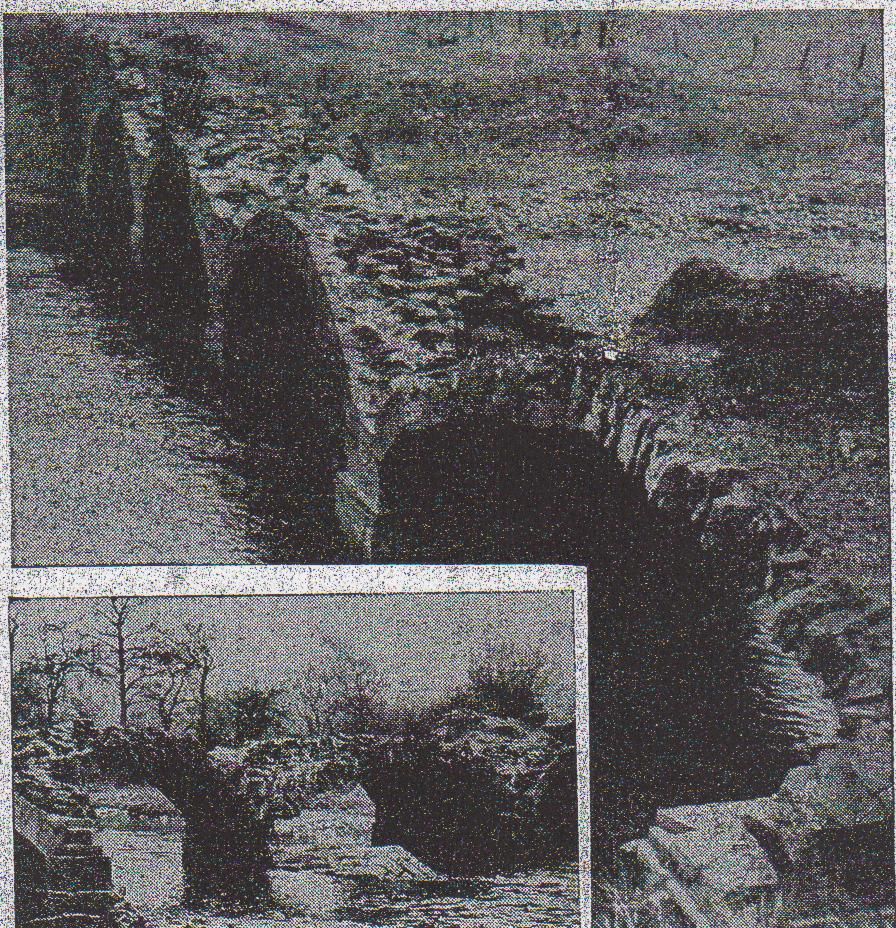
Email Yeargroup:
yeargroup@hotmail.co.uk
Email Wolfian Design:
webdesign@wolfianpress.com

Click the cover to purchase the paperback
How To Write Alternate History is a series of articles by Grey Wolf, examining subjects such as the identity of man, whether man makes the weather, how the everyday in an alternate world is going to be changed and what names for music, vehicles, weapons etc would be different.




